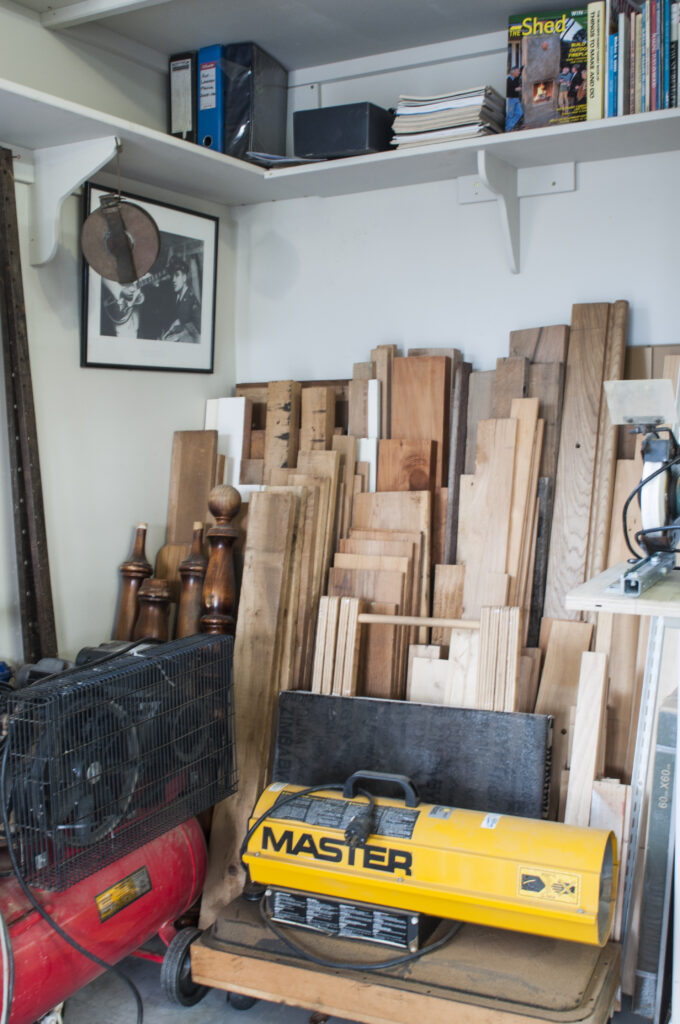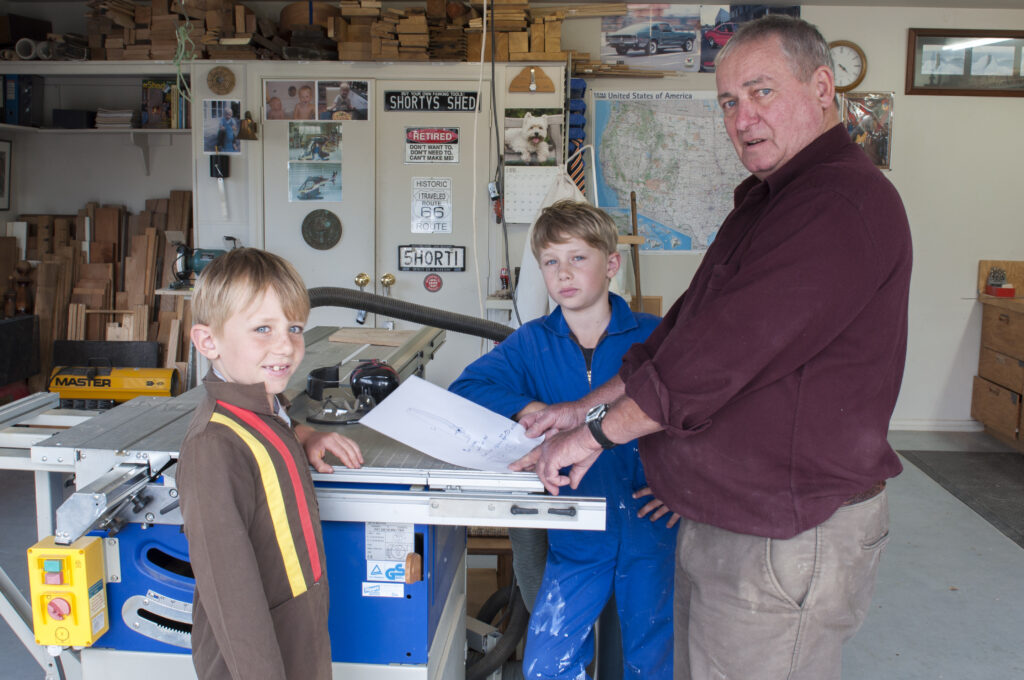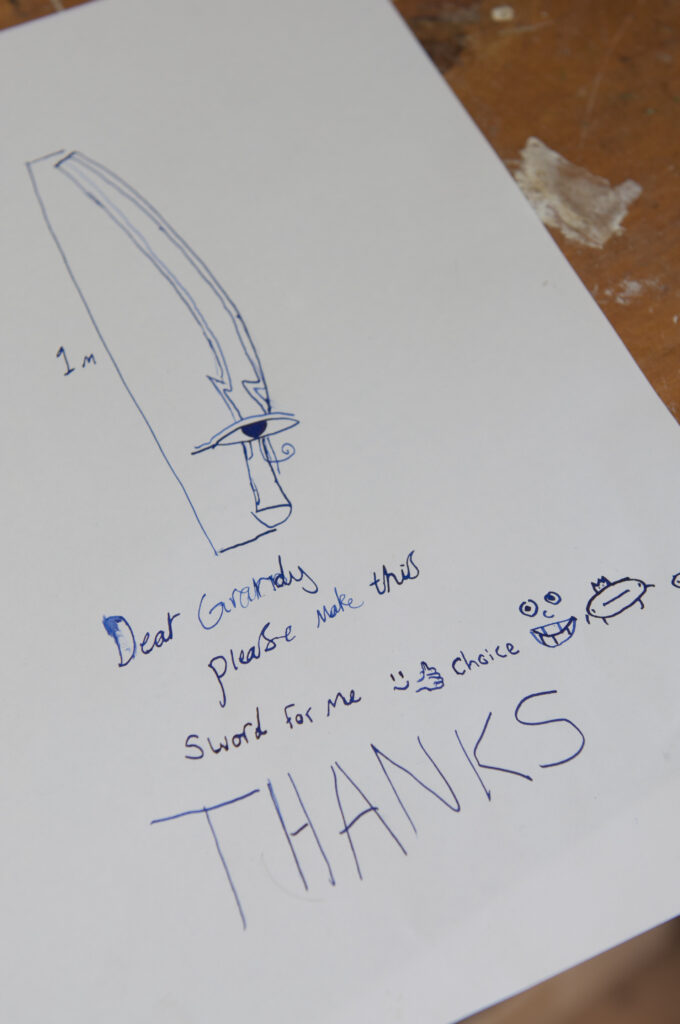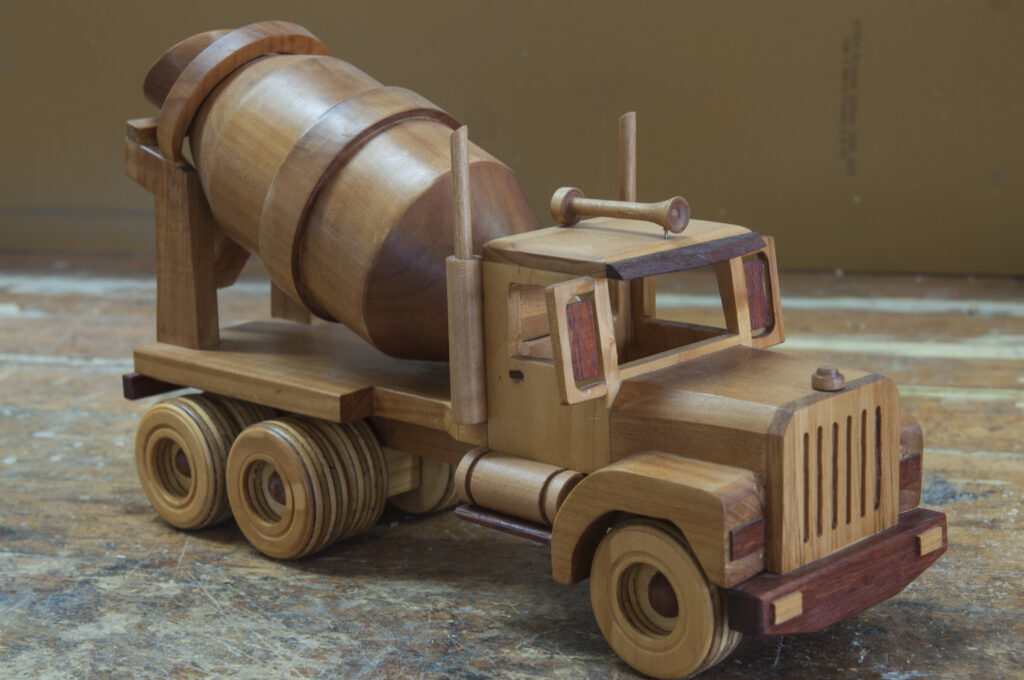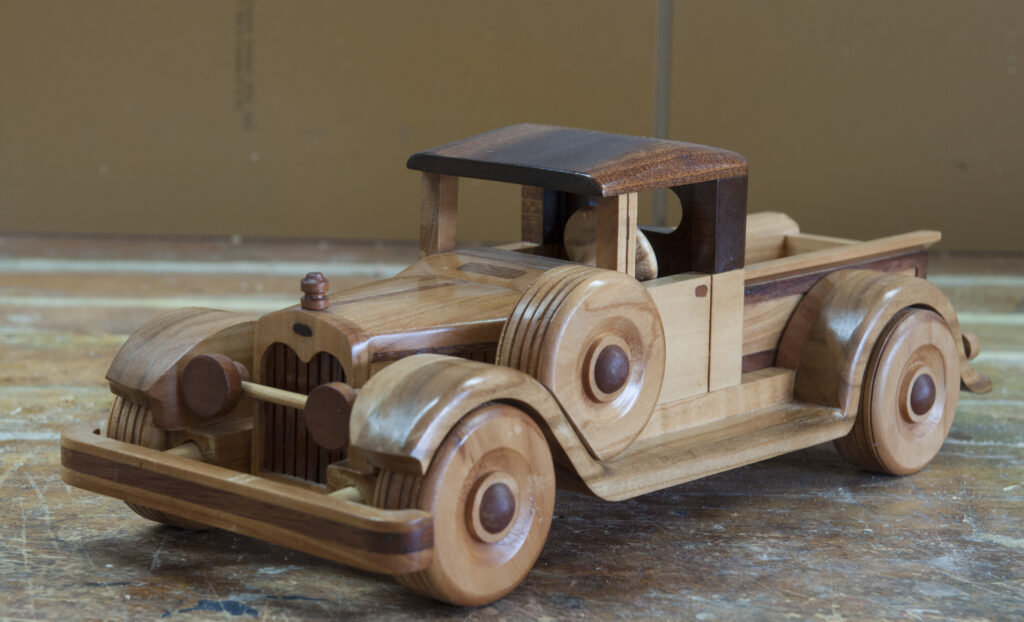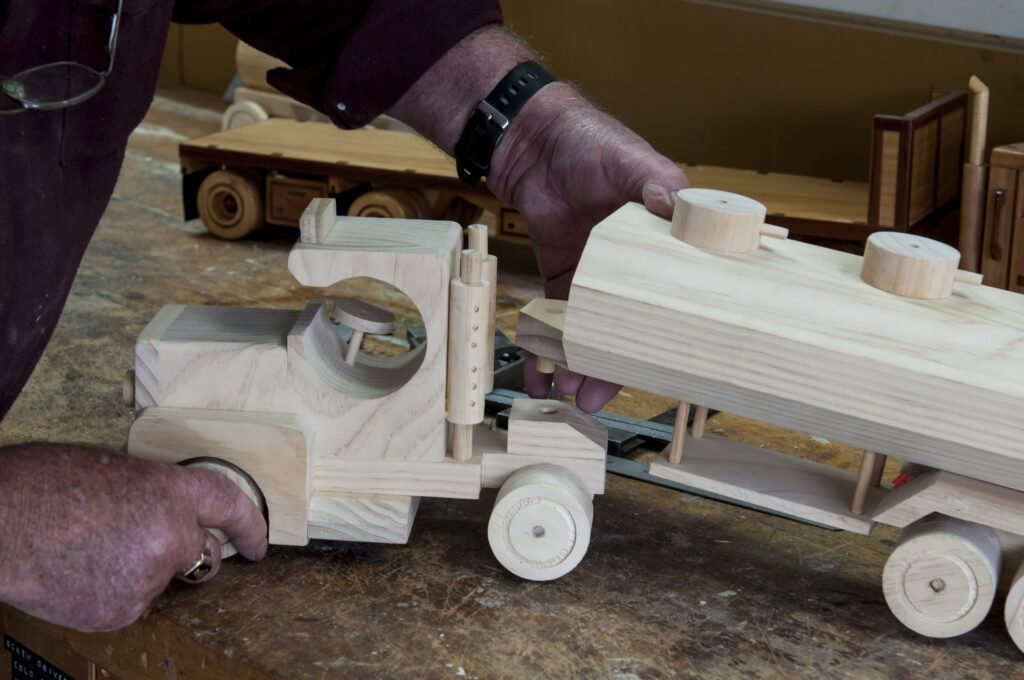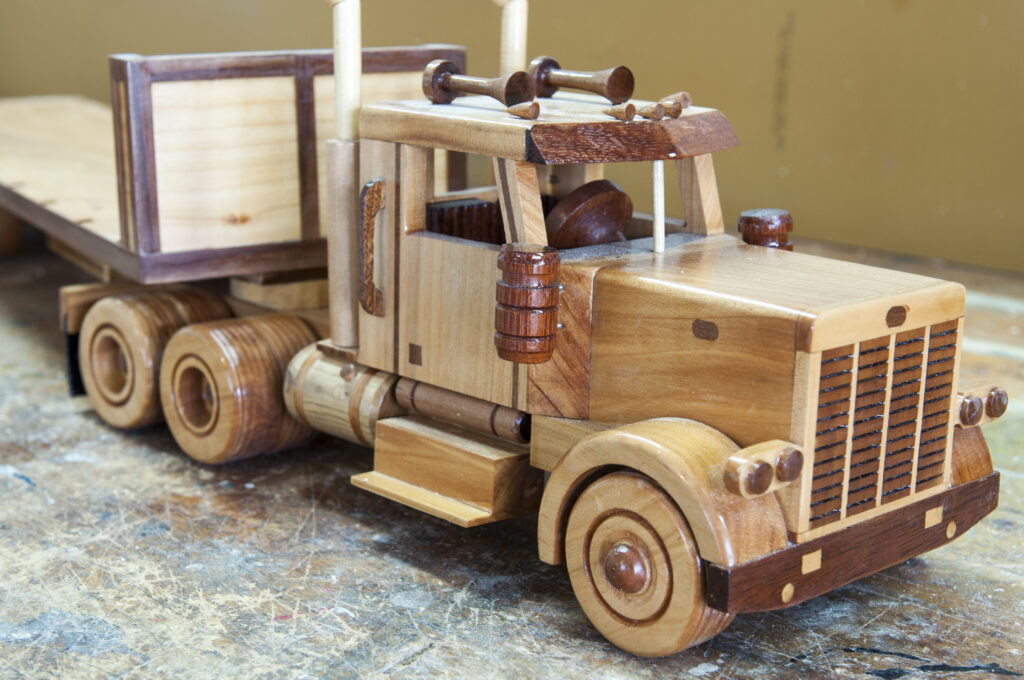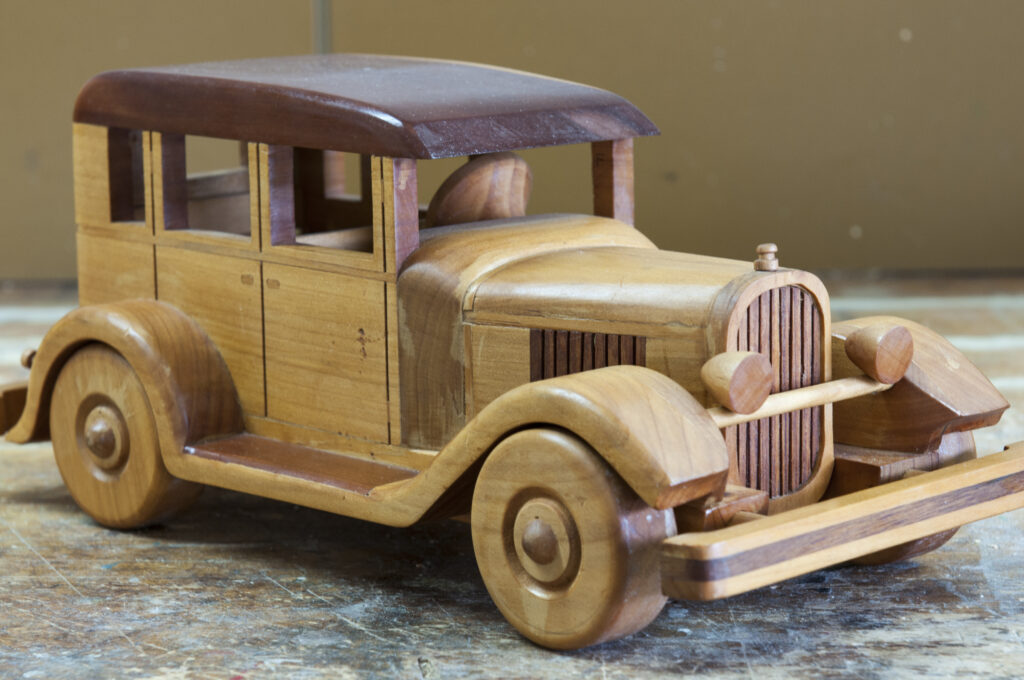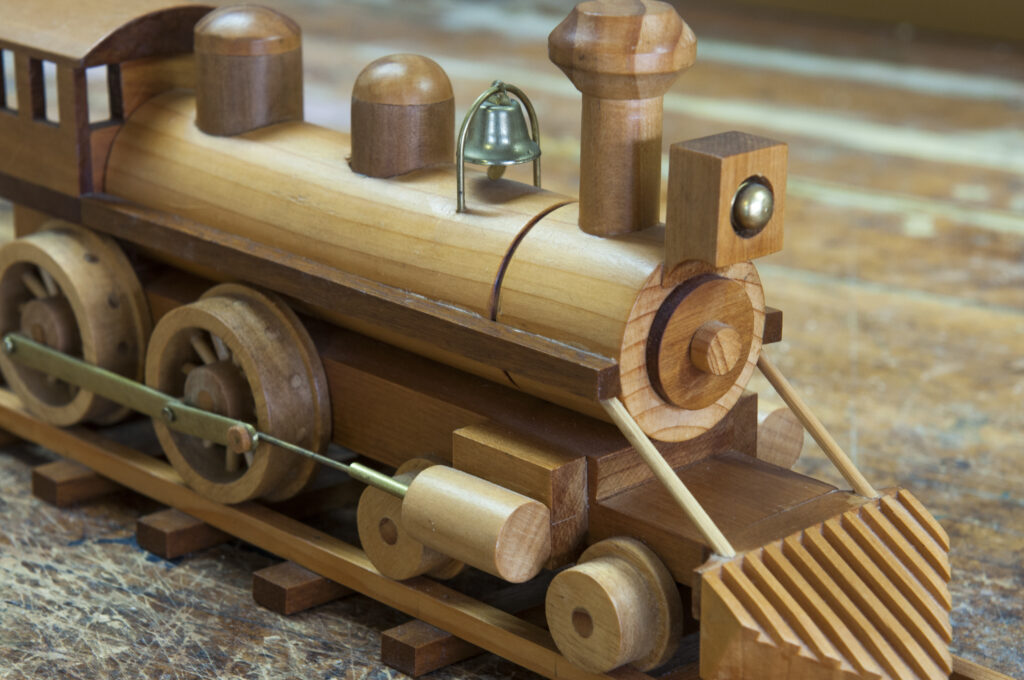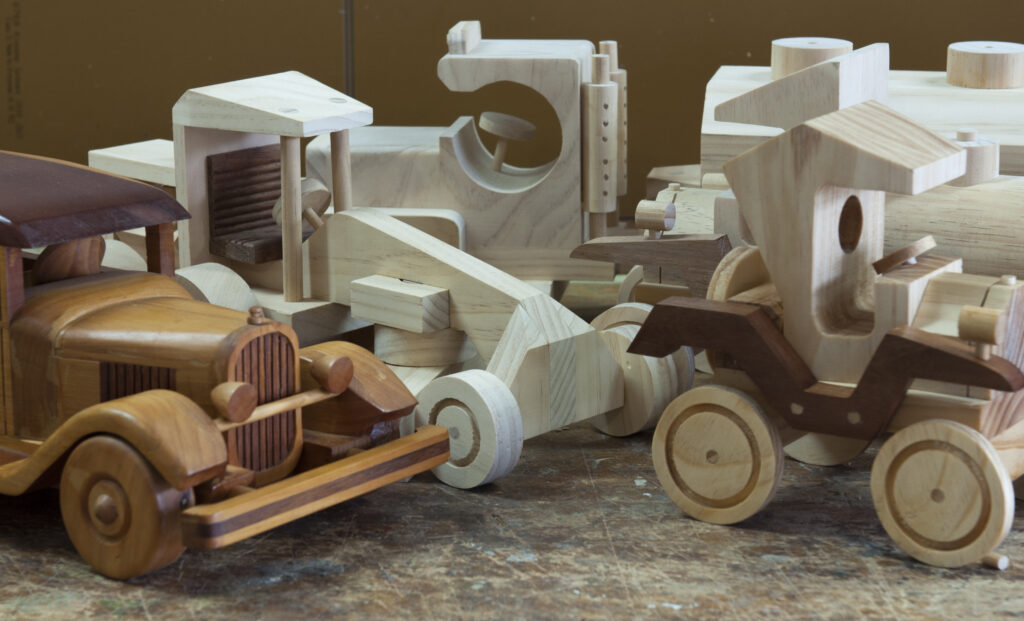A retired carpenter loves his new “job” crafting vintage wooden vehicles
By Sue Allison
Photographs: Juliet Nicholas
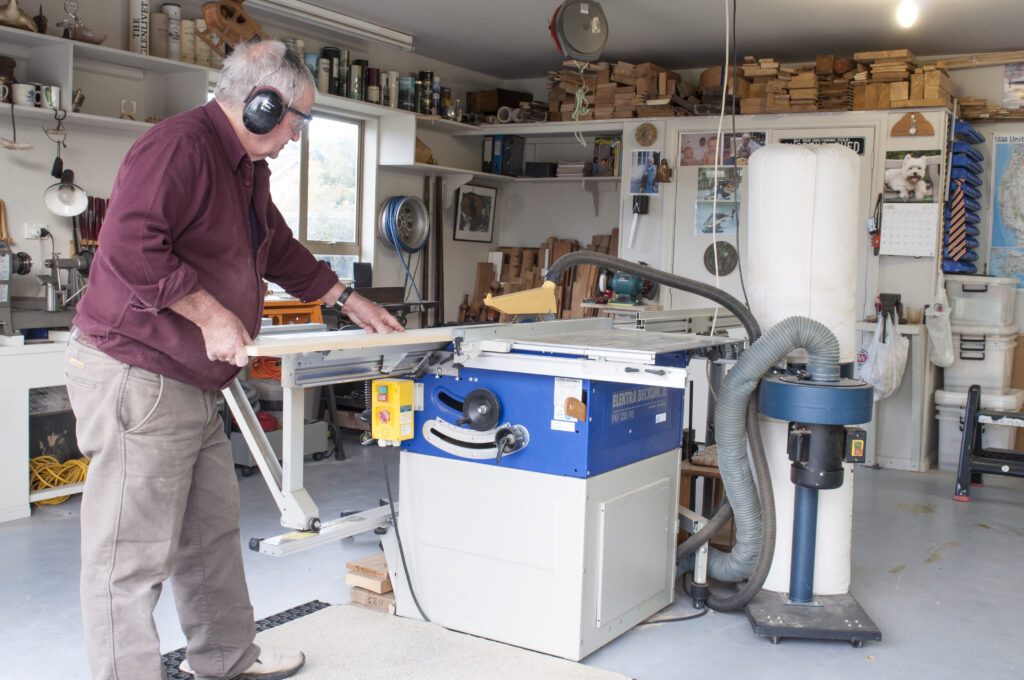
When you are a carpenter by trade with an interest in cars and still young at heart, making wooden toys has to be the perfect retirement occupation—although many of Alan Gray’s “toys” are not the sort of playthings you would put in the hands of small children. His meticulously crafted vintage vehicles, fashioned mostly from native timbers, mahogany and macrocarpa, can take around 60 hours to make and are more collectors’ pieces.
To keep the real kids happy, he has a more robust range mostly made from Pinus Radiata – diggers, trucks, pull-along hippos and the like.
Alan, 71, and his wife, Lesley, have been living in Cromwell for the past six years. Originally from Dunedin, Alan trained as a carpenter but turned his hand to fishing after moving to Stewart Island. He then spent the best part of three decades skippering boats for the Department of Conservation.
Alan renewed his interest in working with wood about 12 years ago. “I saw books on making wooden cars and thought ‘I wouldn’t mind trying that’.”
Being a methodical man, he started by putting up a Skyline workshop, then building a serious workbench. The 5.8 metre-long bench and drawer unit is based on an American design.
“I saw it on The New Yankee Workshop programme on TV and sent away for the plans,” he says. He used laminated macrocarpa for the 86 cm-wide top and marine ply for the 22-drawer unit. His own adaptations included lowering the mid-section to fit his DeWalt drop saw, allowing wood to be slid directly across the bench and onto the cutting platform, with a bin for off-cuts below.
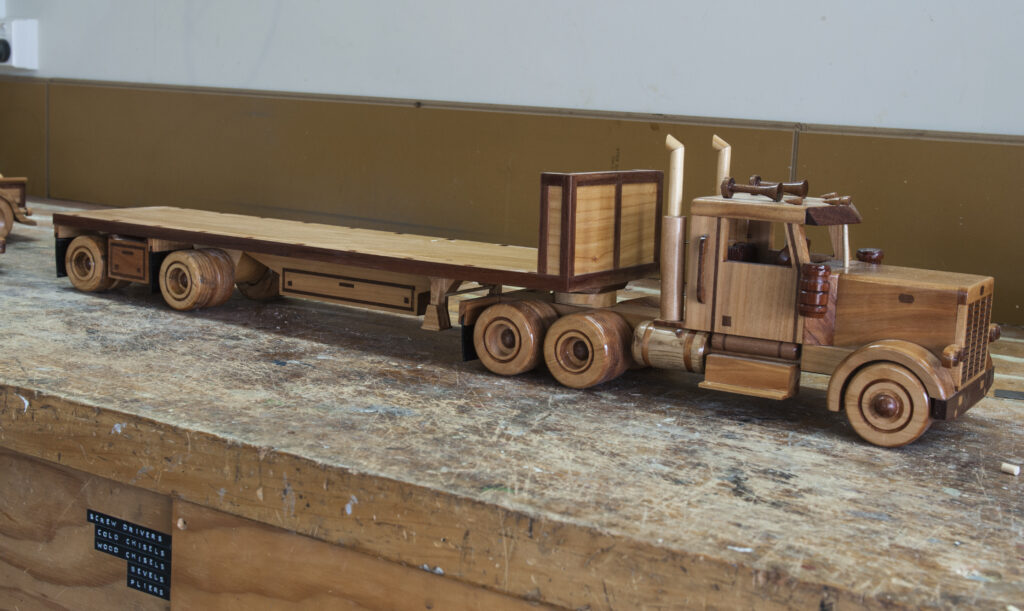
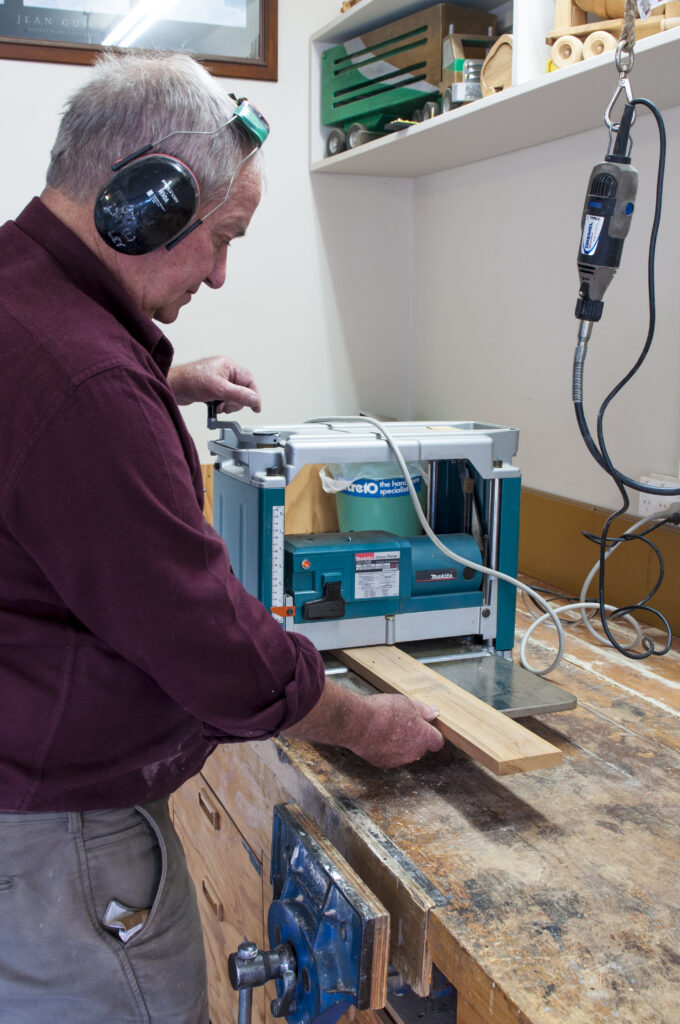
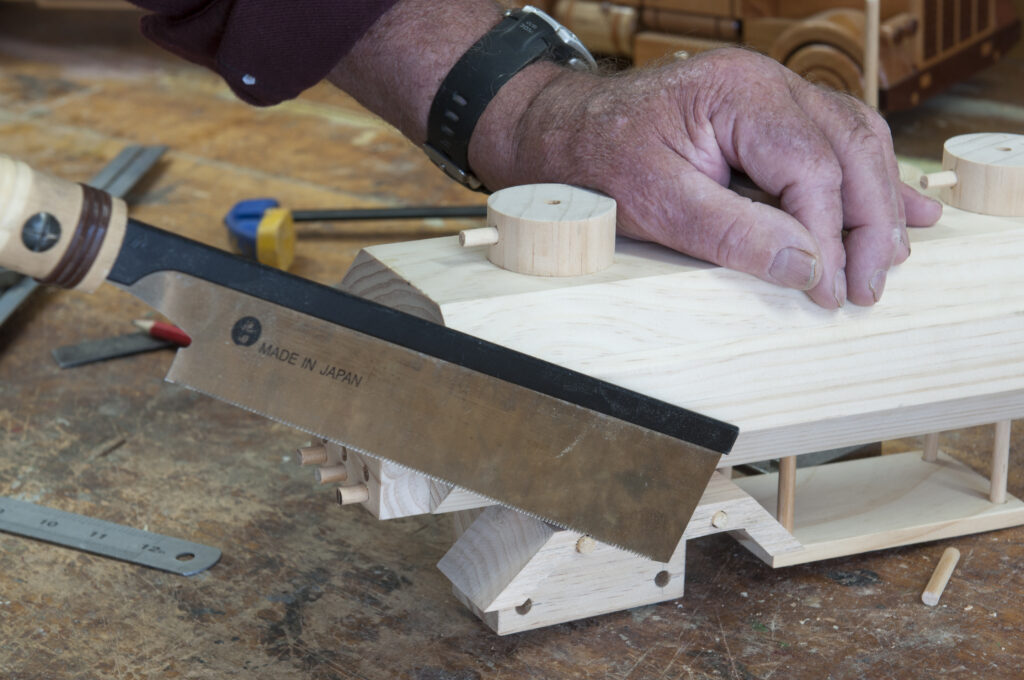
Workspace
He invested in a router jig to make the mortise and tenon joints for the drawers, which are 60 cm wide but of varying depths and compartments to suit his tools. He kept the partition heights well below the drawer height to stop things getting jammed or falling out.
Alan likes his workspace to be tidy and well-organised. “I prefer keeping my tools in drawers. I don’t particularly like stuff on the walls,” he says, the exception being a rack of chisels at arm’s reach above his wood lathe.
When the Grays moved to Cromwell, where a separate double garage as well as one attached to the house sold the property to Alan, a top priority was transporting his work bench from the island. “I got the top off in one piece and cut the drawers into three pieces, screwed them shut so they didn’t warp in transit and put it back together again up here.”
Alan makes his models, which include trucks, trains and heavy machinery as well as vintage vehicles, from American patterns. “It’s all in feet and inches, but I was brought up in that anyway, so it’s not a problem.”
He likes working with native hardwoods, but macrocarpa is probably his favourite wood to work with. “It’s strong, comes up well with oiling and smells really nice.” Most of his timber comes from friends. “I buy some macrocarpa and pine but people know me now and give me bits of hardwood. I don’t need big pieces. I can make quite a few things out of six or seven inches of wood.”
Alan is both a perfectionist and a purist. He doesn’t use any screws or nails, all his models being put together using tenon and dowelled joints fixed with PVA wood glue. The wheels on his vehicles are free-rolling, with wooden dowel axles fitted through holes drilled just 1 mm bigger than the rod’s diameter so they turn freely but smoothly.
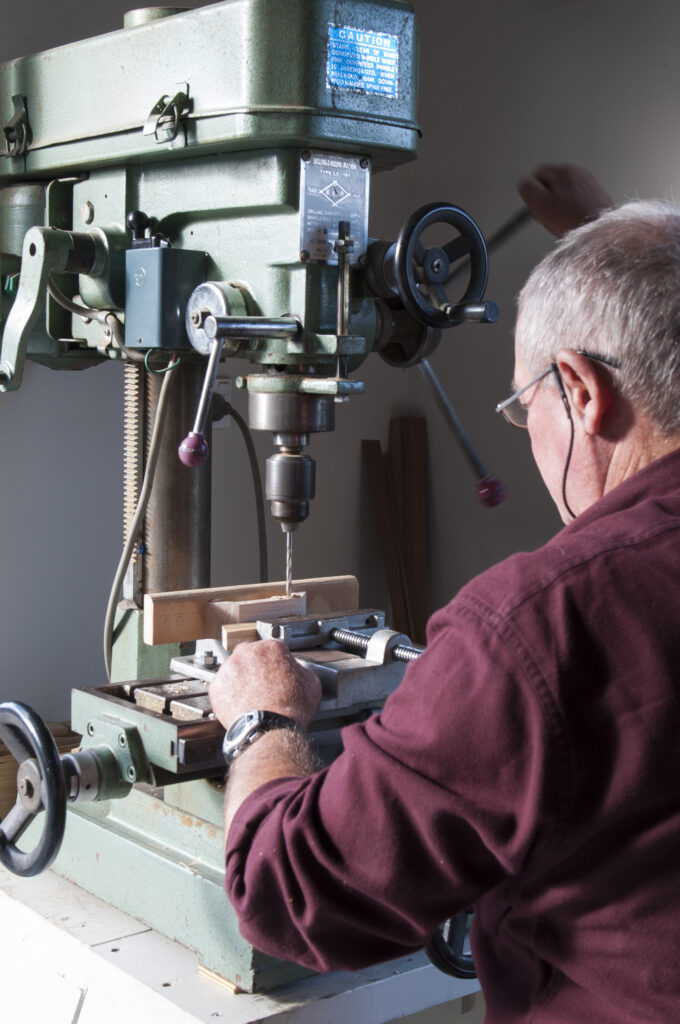
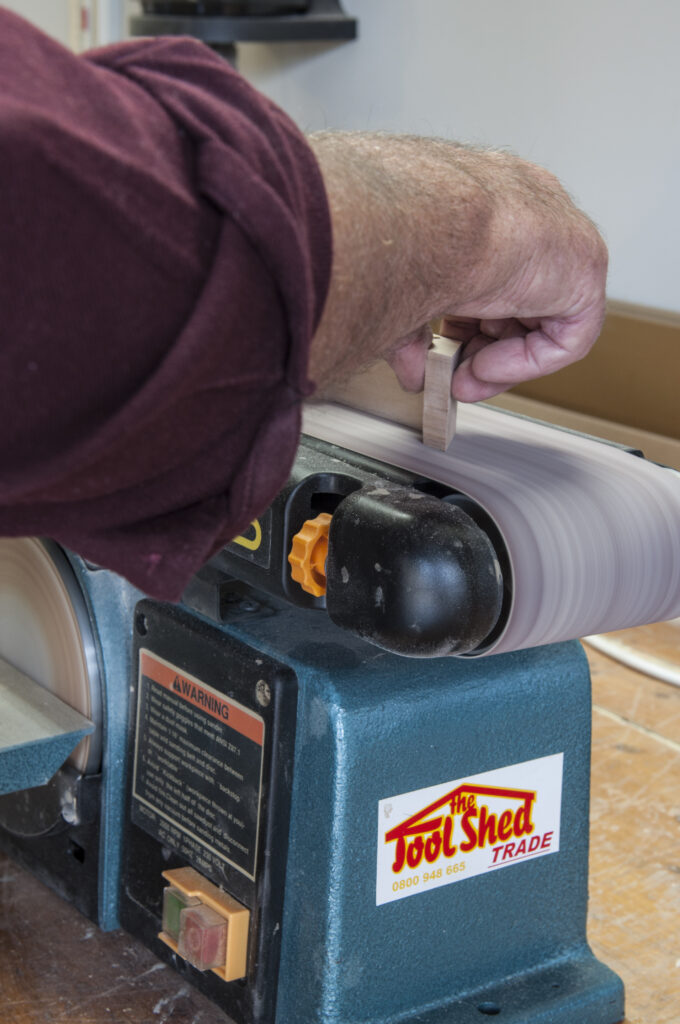
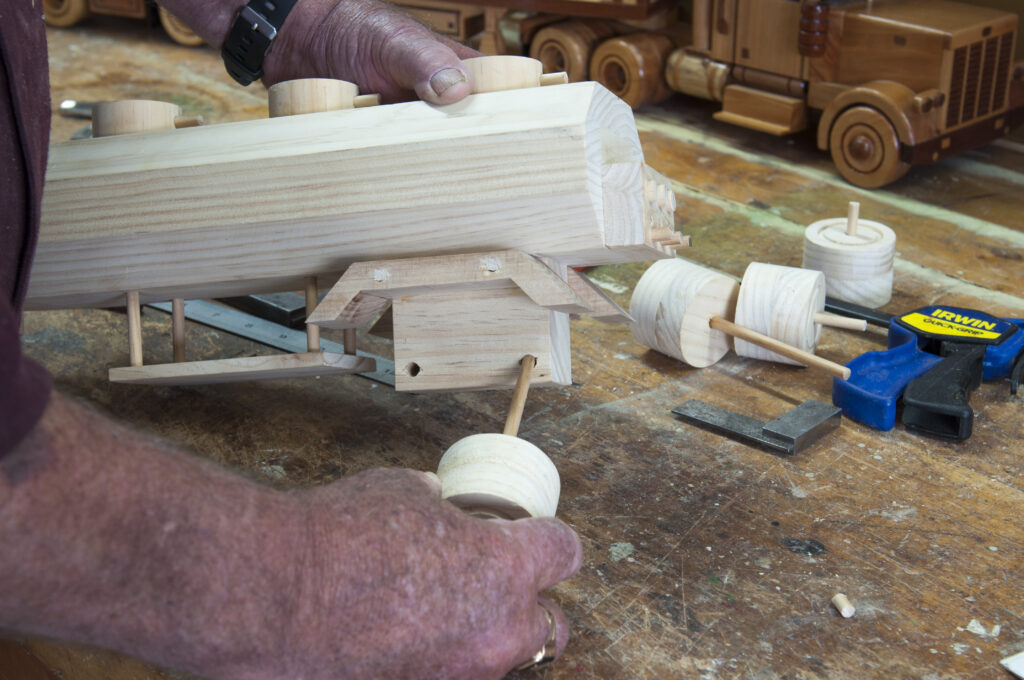
Natural finish
Nor does he stain or paint any of his models, using the natural colour and grain of various woods to get his effects and finishing them with several coats of Danish oil to bring out the beauty of the timber. Occasionally, he brushes some of his children’s toys with natural food colouring. “The colour soaks in without covering the grain, and it’s fine for kids to chew on.”
Alan has built up a good collection of tools over the years, “inheriting” quite a few while living on Stewart Island and picking up others at Invercargill’s renowned Todd auction. “You would walk in there and Bill Todd would yell out ‘gidday, how long did the ferry trip take?’ and as soon as you answered he’d call ‘sold!’”
He cuts his wood to lengths with a DeWalt drop saw, then dresses the pieces to size with a Makita Thicknesser. He cuts out the shapes with his most-used tool, an old bandsaw that started life cutting up meat on a Southland farm.
His favourite saw for fine work is a small Japanese hand saw with very fine reverse teeth. “It cuts on the pull back, which gives you a lot more control.”
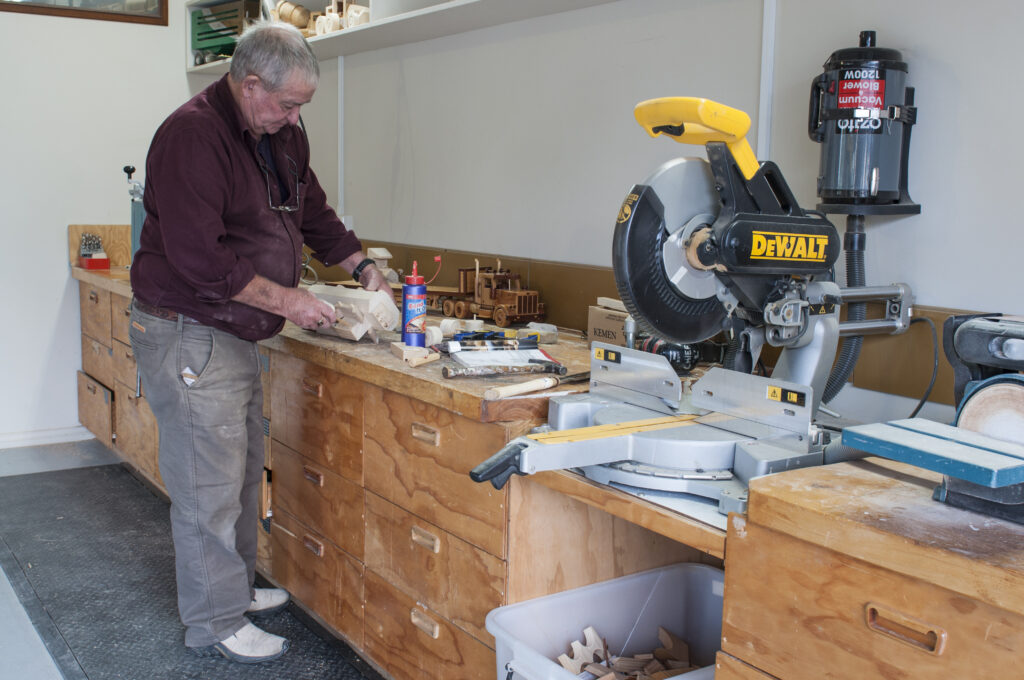
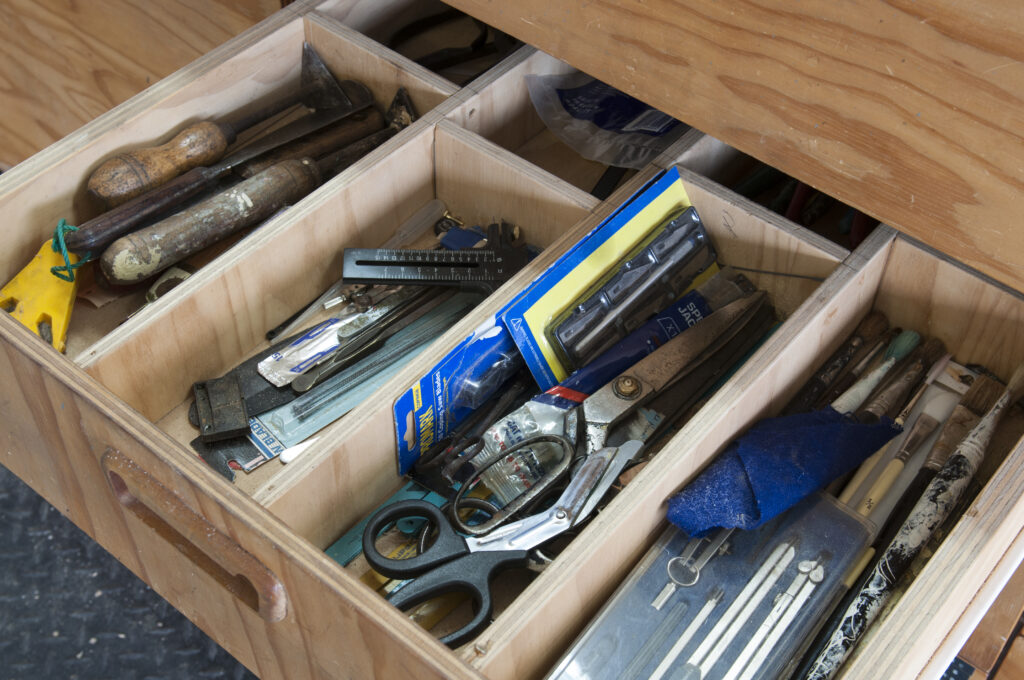
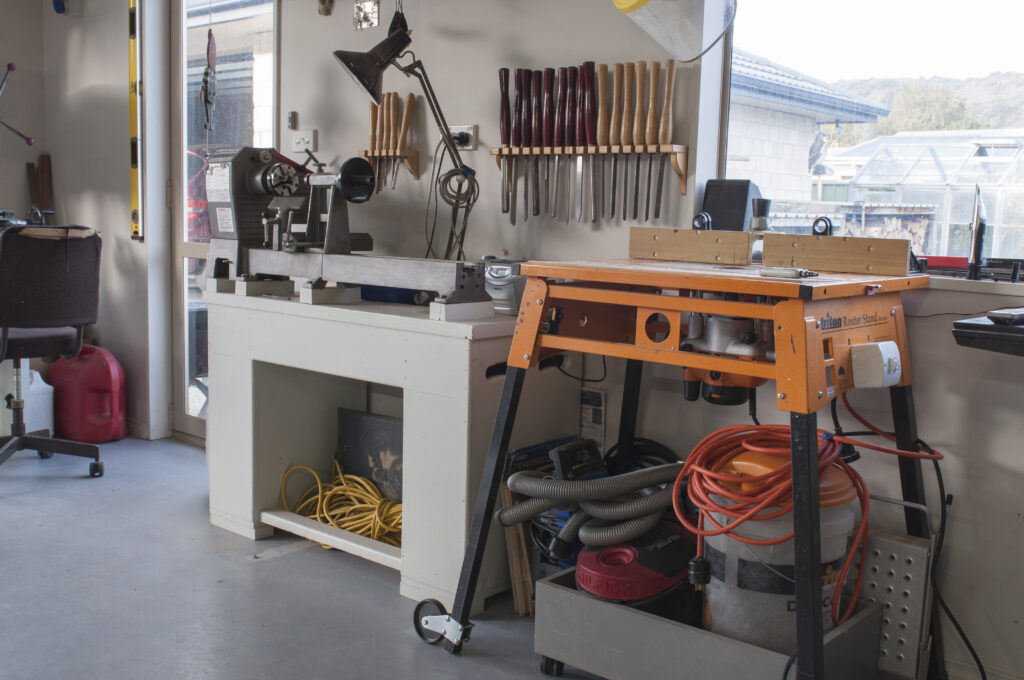
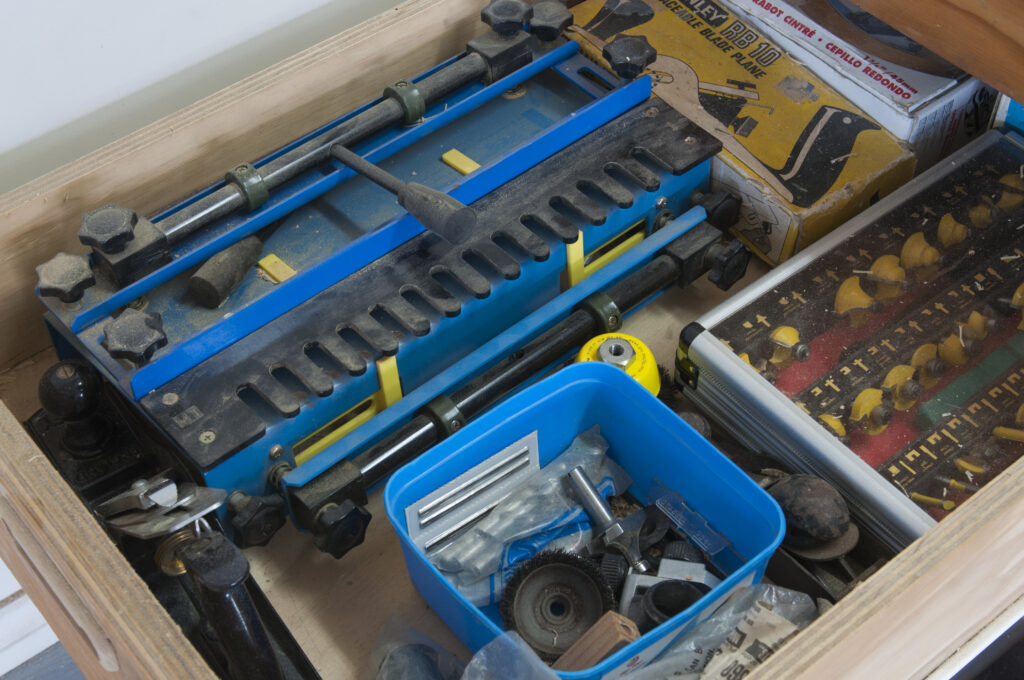
Compass plane
One of his most treasured tools is a compass plane, although it’s a bit big to be of much use on small models. He used it on the island to plane around the outside of a ship’s wheel he was repairing. “You can curve both external and internal curved surfaces with it. It’s also good for making the arms of armchairs,” says Alan, who also does a bit of repair work for friends.
A circle cutter made by a friend on Stewart Island, tool-maker Allan Wadds (see The Shed, April/May 2016), is one of the most useful and ingenious tools in his kit. The small steel contraption fits into his drill press and can cut circles up to about 4 inches (101 mm) in diameter. Alan first drills a 5 mm hole in the wood, then pushes a metal dowel through and sets the diameter of the 1/8 inch chisel-like blade, which cuts the circular hole. “It makes a much neater job than a hole saw,” says Alan, who uses it, among other things, to form the cab of his truck trailer and hollow out the concrete mixer.
Alan is always discovering new tricks. “For sanding or planing really thin stuff, I get double-sided tape and stick it onto the bench to stop it flying across the room.” He does the same to run round wheels with a router to get the effect of tyres. Not only does it hold pieces still, but it also avoids them getting marked by a vice or clamps.
He has recently added off-cuts of ready-grooved hardwood decking planks to his timber store. He slices off the ridged surface to use as vehicle grilles and seats, and uses the rest to make contrasting features or dark inlays. Before this discovery, he used to painstakingly cut grooves in mahogany pieces with his bandsaw.
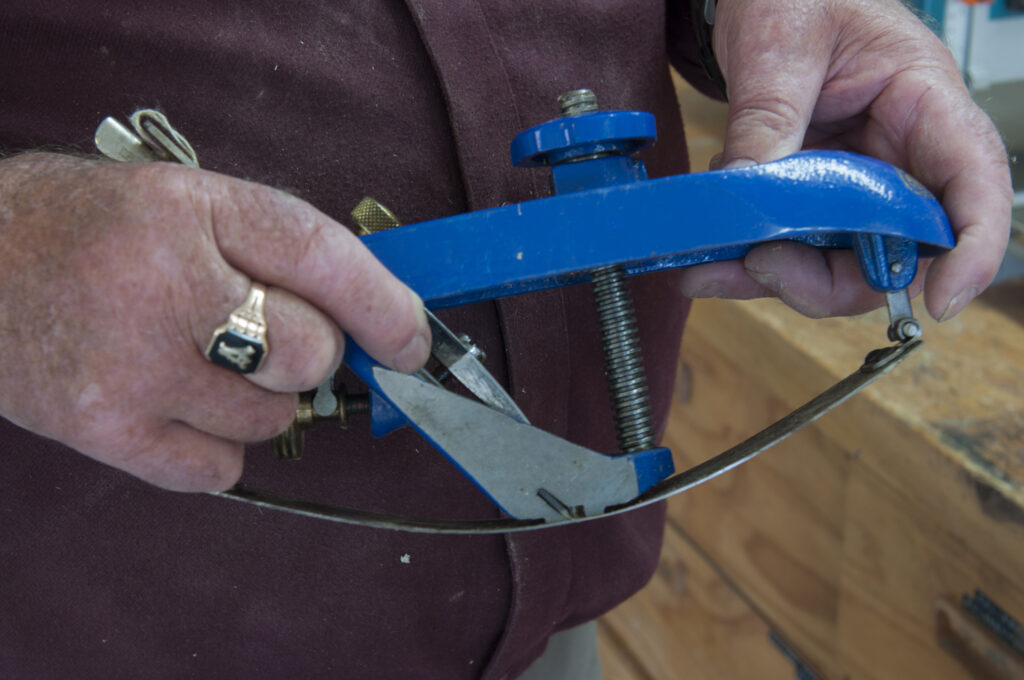
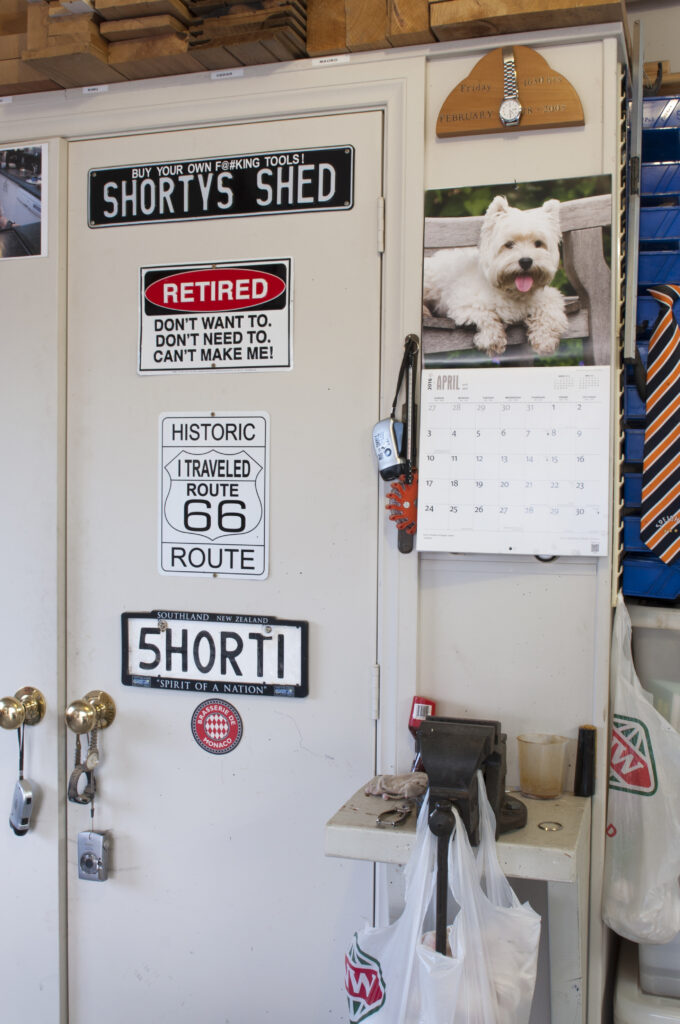
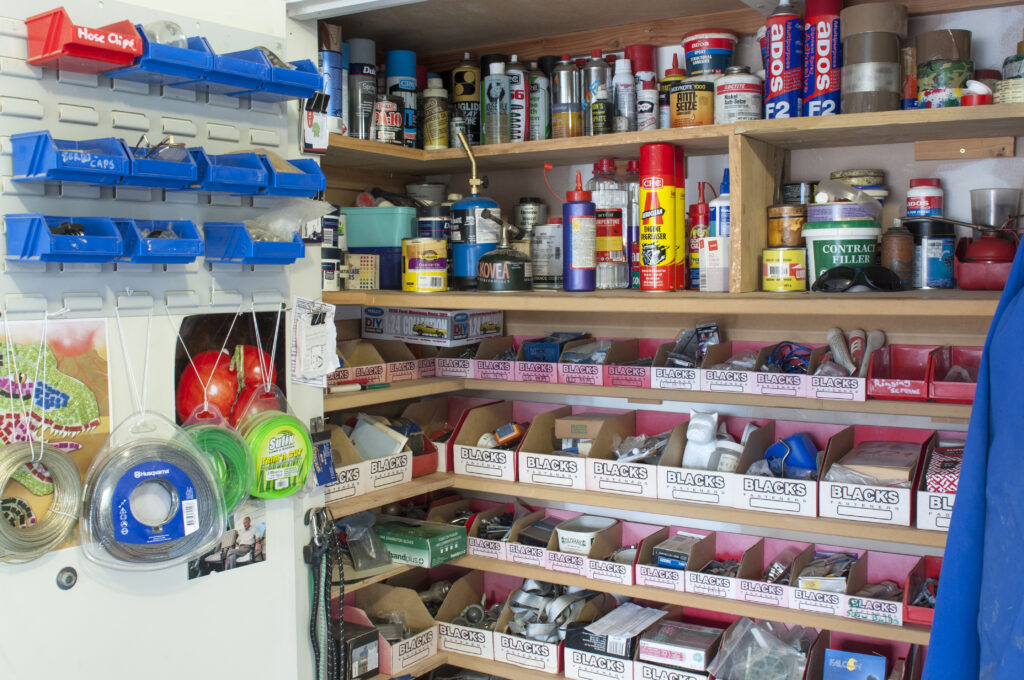
Any excuse will do
Picking up accessories, like brass rods for his railway engine wheels, is always a good excuse to visit E Hayes and Sons hardware store in Invercargill, an institution that has even made it into the Lonely Planet travel guide as home to Burt Munro’s record-breaking World’s Fastest Indian motorbike and other motoring memorabilia.
Alan’s models are set apart by his attention to detail and finishing. “There’s a lot of handwork,” he says. Inlays of different coloured woods are fitted into chiselled recesses, glued with PVA hardwood glue and sanded to perfection. He uses a Dremel tool with tiny sanders and round blades for the finer work and finishing touches, then blows all surfaces before oiling to ensure they are completely dust-free. Both his belt sander and drop saw are attached to an Ozito vacuum and dust collection unit, and he uses a compressor to keep the shed clean.
“I am pretty tidy,” he admits. “I don’t leave things lying around. I try to finish one job then have major clean-up before I start on the next one.”
Alan sells some of his toys at his sister’s market stall or his daughter’s shop in Dunedin. “But most of them I seem to give away,” he says. His first long truck and trailer were raffled to raise money for the Cancer Society. “When I’ve made something new, I usually bring it into the house and look at it for a while, then put it up on the shelf in the shed.”
Quite a few of his one-off “commissions” come from his grandsons, Archie and Angus—the latest a couple of khopesh swords. He also keeps a box of off-cuts under the saw bench for the boys to make things out of when they come down from Auckland.
Alan is hardly pottering in his retirement. “I spend most of my time out in my shed,” he says, even in the freezing southern winters. “It faces due north, and the sun streams in from about 10 am. I open the big double doors and stay out there till about 3 o’clock when the sun goes.”
The sign in his shed says it all: “Retired. Don’t want to. Don’t need to. Can’t make me.”
